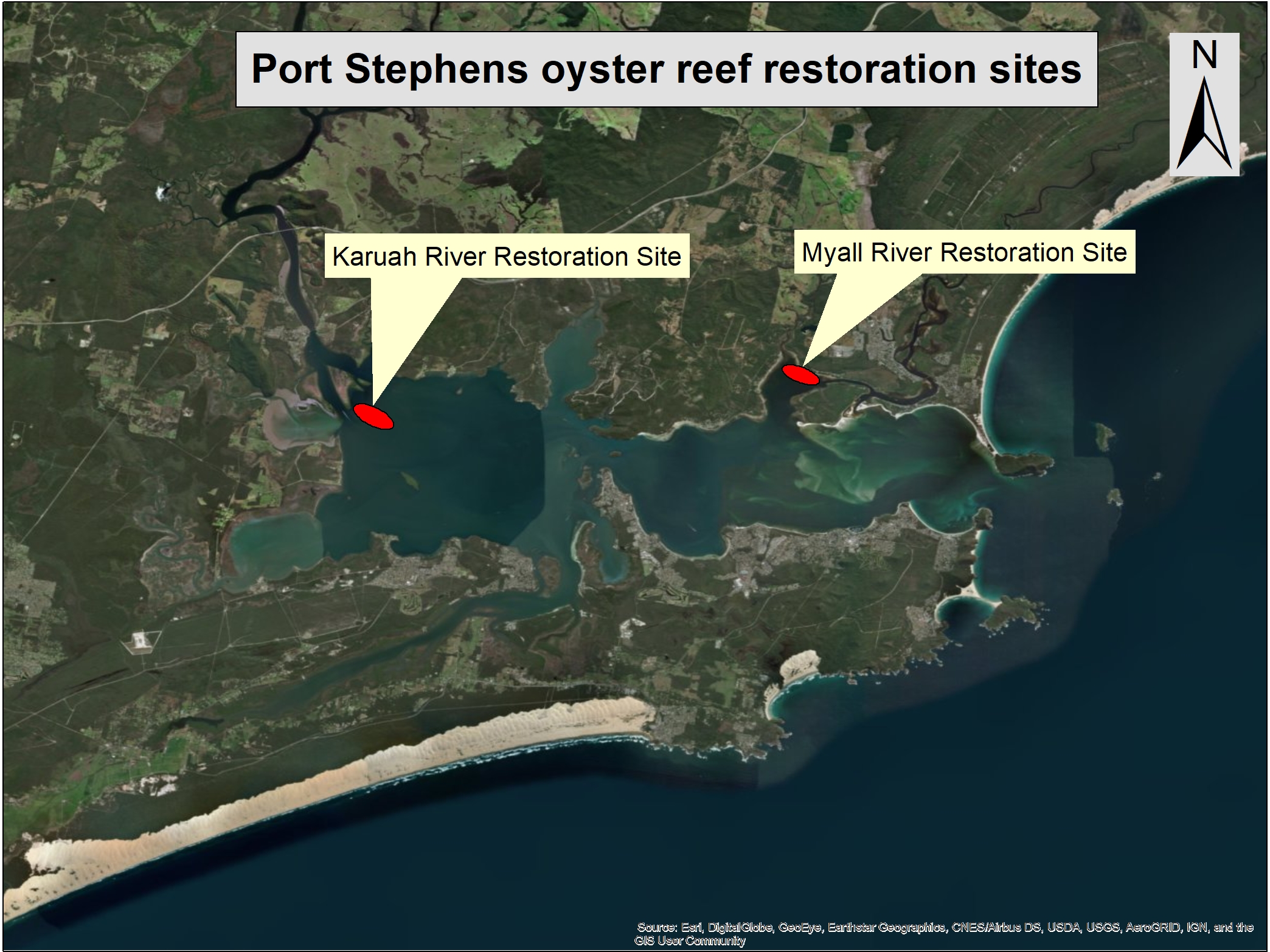Restoring oyster reefs in Port Stephens

What is oyster reef restoration?
Oyster reef restoration introduces sterile shellfish shells and/or rock to the estuary bottom, preferably in areas with high settlement rates of wild oyster larvae. If the settlement rates are low in the area being restored, then ‘seeding’ of the shell or rock may be required. This involves oyster larvae produced in a hatchery, settling onto the shell or rock and then the shell or rock placed in an estuary.
Given the right conditions, over time these juvenile oysters grow and reproduce creating a self-sustaining ecosystem with all the benefits of a natural oyster reef.
Methods used in Port Stephens
From late December 2019 until early March 2020, DPI Fisheries will work with a local contractor M+J Marine to construct two oyster reef bases in the Port Stephens estuary using more than 3,000 tonnes of rock and recycled oyster shell. All oyster shell used in the project has been collected from oyster farmers located within Port Stephens, to ensure diseases are not introduced from other estuaries.
The 75 – 300mm sized rock and clean oyster shell will be placed in the intertidal zone at two sites, in “beds” from 20 to 40 cm in thickness.
Reef construction will be conducted using a 16m shallow draft barge equipped with a long-reach crane and several smaller tender vessels. Land-based handling of material will involve using heavy plant machinery, and commercial trucking services.
Port Stephens has naturally high levels of oyster larvae and it is expected that seeding will not be needed. The baby oysters (called ‘spat’ when they settle) will colonise the new rock and shell reef bases during late summer and autumn 2020 and will begin to grow into solid oyster reef. Construction work is timed to coincide with the highest levels of oyster settlement in the Port.
Locations
Two oyster reef restoration locations have been selected in the Port Stephens estuary:
- at the entrance to the Karuah River in the western basin
- at the entrance to the Myall River in the eastern basin
These sites were carefully selected to minimise impacts on boating routes, to be consistent with Marine Park zoning, to maintain private foreshore ownership/access, and preserve existing historic oyster reef. They are located in places that have suitable biological conditions for oyster settlement and growth.
Monitoring and evaluation
Studies of the Port Stephens project area have been conducted since January 2018, before the restoration, to establish a baseline of information. Monitoring will include:
- sediment and reef core samples to identify marine life using the area
- underwater video of the existing fish communities
- environmental DNA analysis to determine species using the area.
Studies to be conducted during and after the restoration will help to identify the changes brought about by the oyster reef restoration. Monitoring will include:
- all of the above listed techniques
- oyster settlement rates
- the occurrence of oyster pests and diseases
- water filtration rates by the oysters (to provide an indication of water quality improvements).
Monitoring will continue during and after the reefs are built and oysters establish. Comparison with the baseline information will allow DPI Fisheries to measure the success of the project.
More information
Read more about the oyster reef restoration project.
For more information, contact Kirk Dahle by phone - 02 4982 1232.